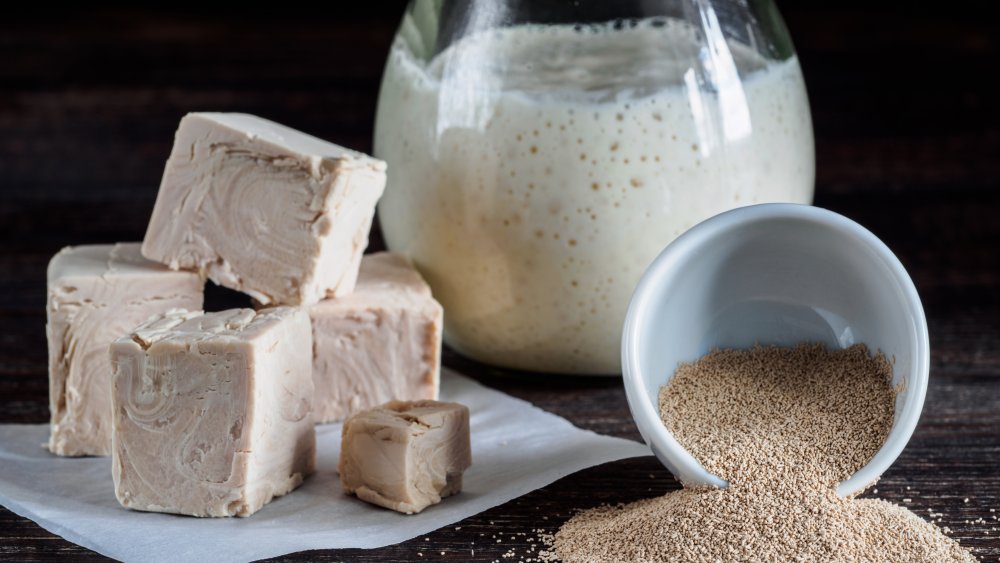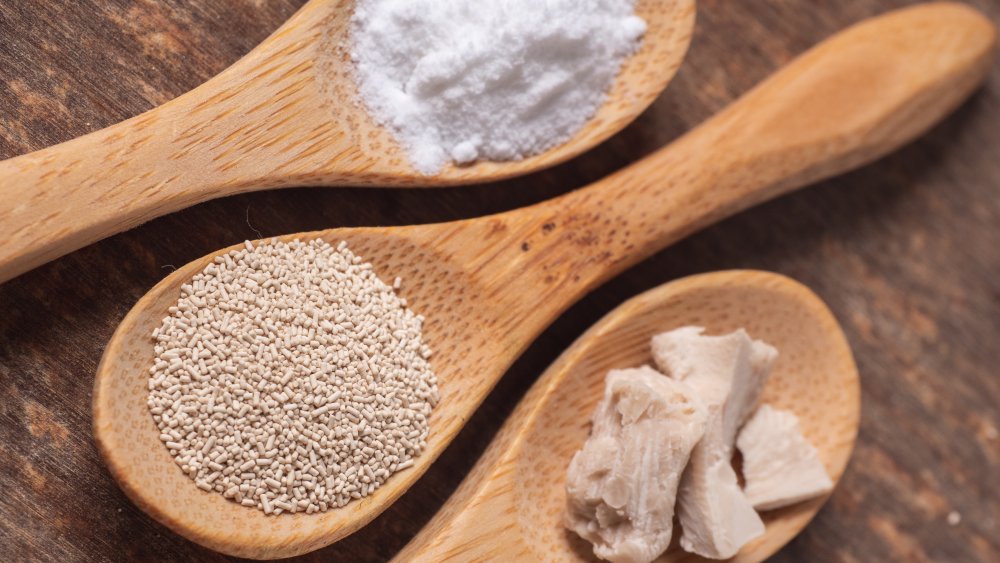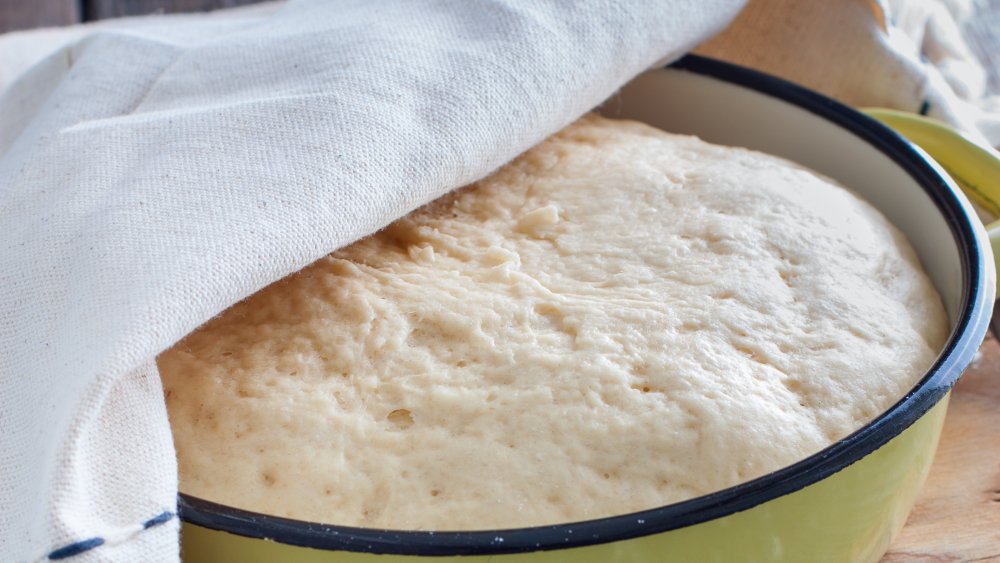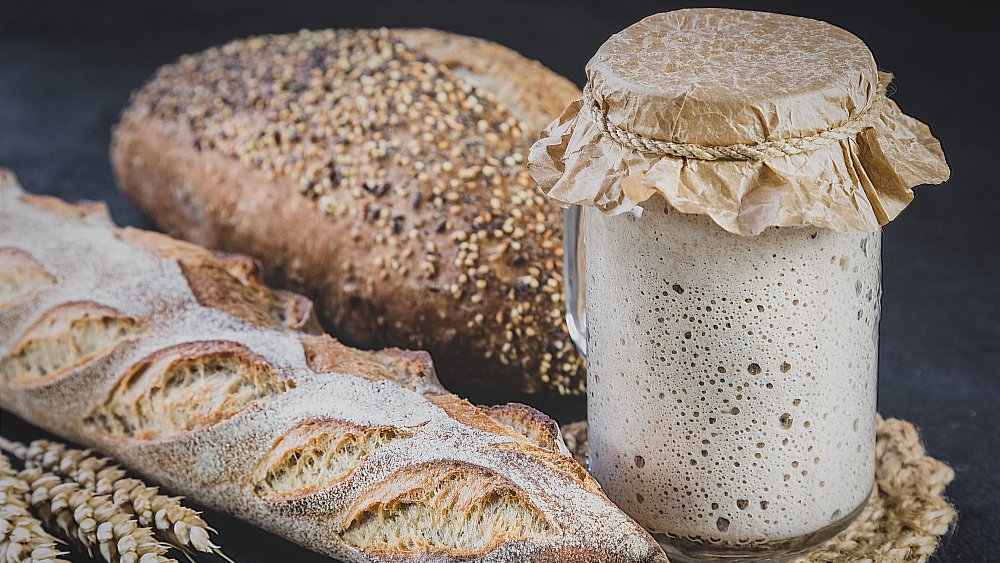The Real Reason You Can't Find Yeast Right Now
From the country's inception, Americans have proven nothing if not industrious — a pull-yourself-up-from-the-bootstraps breed designed to believe in overcoming adversity. But that doesn't mean we're immune to reaching for emotional crutches in trying times.
No surprise, then, that the current COVID-19 crisis practically requires comfort food, those culinary delights defined by providing "consolation or a feeling of well-being," often "associated with our childhood or with home cooking" (via Vitacost). One such psychological balm in these unpredictable times (low-carb diets be darned) has been fresh-baked bread.
The Washington Post reported in late March that bread shortages on grocery store shelves, combined with (for many) the feeling of endless amounts of time confined to home, has inspired a serious uptick in bread baking, which now fills Instagram feeds, calms anxieties, and even provides a sense of community in a time of social distancing.
CNN noted this week that "everyone's suddenly baking bread," a byproduct of quarantine cabin fever, yes, but also the search for control and focus in unpredictable times — with the added bonus of producing something that can be shared among families (or, if nothing else, on social media).
Despite all of the benefits that baking offers, there is one downside: This spate of creativity in the kitchen has led to a surprising shortage of baking supplies, including flour and yeast.
The yeast shortage problem
The United States isn't the only country facing a run on yeast packets. Across the pond, The Guardian reported this week that eBay-based predators were shilling yeast at 10 times the price as demand skyrocketed from homebound bakers.
Here in the States, SILive.com reported on yeast shortages in New York, thanks to a "sharp increase in demand" that cleared shelves of yeast and led to manufacturers ramping up production in response. NBC News noted that across the country in California, yeast proved "nearly impossible" to find for one shopper, but experts assured the shortage was "the result of increased demand, not a lack of supply," and that manufacturing "pipelines are in good shape."
Therefore, The Washington Post compares baking supplies like yeast to "other in-demand groceries, such as toilet paper and eggs ... stripped off the shelves" by crowds of shoppers who seek to stock up in uncertain times.
The good news? Experts predict the situation should return to less-dire levels once suppliers increase production, stores have a chance to restock, and frenzied shoppers ease up on their bulk-quantity buying. And maybe, once life returns to normal, many of us will be armed with a bevy of new baking skills to help get us through the next crisis that comes our way.
Behind the yeast shortage
Unfortunately, though the situation hopefully will improve, the sudden yeast shortage won't fix itself overnight. Slate reports that makers of yeast were caught "unprepared," because the year's first-quarter sales usually dip after the holiday season — meaning that demand is as much as 600 percent higher now than it was at the same time last year.
Slate adds that the problem is exacerbated by multiple factors: boosted health and safety measures at manufacturing plants, the biologically-necessary timing for yeast growth, and even the ability to package the product quickly enough. Furthermore, according to UPI, the lion's share of baker's yeast (possibly 95 percent or more) is normally funneled to professional, not home-based, bakers for use in bread manufacturing and retail stores. Ultimately, an expert estimates in Slate, shoppers might have to wait a month or two before they witness "a consistent supply of dry yeast on shelves."
What to do when you can't find yeast
If you — like everyone else — can't locate yeast, there are a few substitutes that can work in a pinch. And, if you're lucky enough to have a few packets on hand, there are ways to store yeast (and test it) for maximum freshness.
Alternatively, an array of yeast-free breads, whipped up throughout history, may help quell your carb cravings in the meantime — think sprouted grain bread, flatbreads, peanut butter bread, and unleavened breads like matzo and lavash (via LEAFtv).
But other home bakers are establishing self-reliance right now by making their own sourdough starters. Though they require following some careful rules during creation, experts have been sharing their top tips for making successful starters that allow for homemade bread, sans yeast.
In the Star Tribune, "the Bread Whisperer" from America's Test Kitchen outlined his Instagram sensation #quarantinystarter, which requires only about one heaping tablespoon of flour and two to three teaspoons of water to kick off — ideal for bakers who can't find flour as well as yeast and want to conserve their supplies. The process might take two and a half weeks' time to create a usable starter (plus ongoing upkeep), but would-be home bakers have embraced the technique in the hopes that they'll never have to struggle with yeast shortages again.



